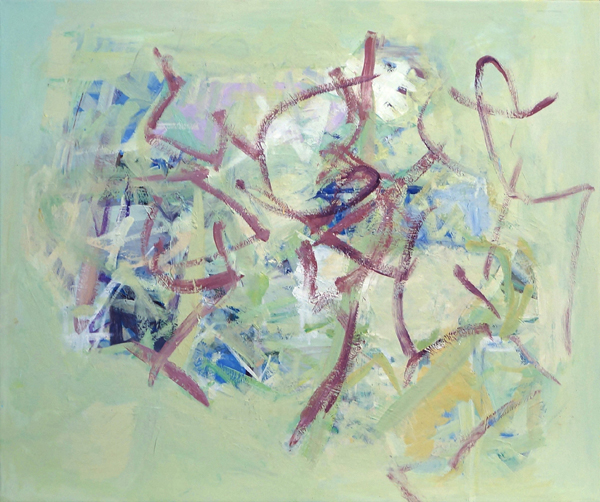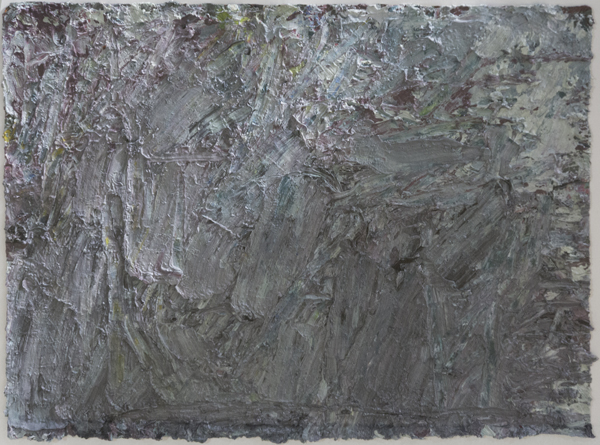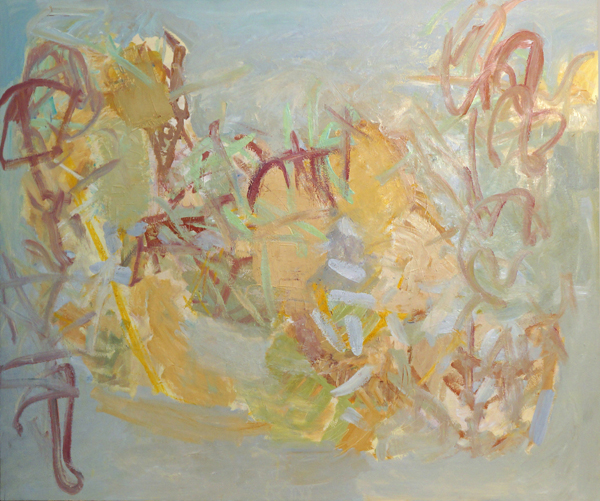In Harry Kramer’s work, the thick surfaces of the canvas are built up from layers of rich color which are interspersed with animated drawing to create what he calls “the bones”. Structure and movement that he experiences in nature inform the rhythmic relationships which make up the abstract essence of his work. Kramer’s extensive practice in drawing serves as a corollary to his paintings.
The art historian and critic Dore Ashton summed it up when she wrote of Kramer’s work:
“Kramer is, then, a lover of paint and a lover of nature. But it doesn’t stop there. It takes many years to get acquainted with the myriad effects available in the repertory provided by oil paint. Kramer has stayed the course and is now a mature painter thoroughly acquainted with each turn of the brush and every surface possible for the painter who knows how to build, stroke by stroke, from the ground up.…These are paintings that have to be looked at with keen attention, from the ground up, literally. If Kramer is convinced that process is reality, the viewer must engage with the process. In the old days, the notion of delectation was enfolded in esthetics. That notion has been rudely expulsed in recent years. In Kramer’s work it can be retrieved. And should be.”
Kramer first gained public recognition in the 1970s with solo shows at the Brata Gallery and Mercer Street Gallery, critically acclaimed alternative spaces in New York City at that time. In the 1980s, his work was highlighted in “Six Painters: Gregory Armenoff, Jake Berthot, Howard Buchwald, Louise Fishman, Harry Kramer and Katherine Porter” at the Hudson River Museum with a catalog essay by the director Peter Langlykke. This was followed by solo shows over the past decades at a number of galleries including the Greunebaum Gallery, the Charles Cowles Gallery and Ameringer and Yohe Gallery, all in New York City. “Orca”, a major large scale work from the 1970’s, is on permanent view at the Federal Courthouse in Brooklyn.
Throughout his career, his work has been reviewed by national and international press including The New York Times, ARTnews, Art in America, the Village Voice, New York Observer, among others.
Kramer’s work is represented in many public and private collections including the Metropolitan Museum of Art, the Brooklyn Museum, the Corcoran Gallery of Art, Yale University Art Gallery, the Hudson River Museum, The Detroit Institute of Arts, Chase Manhattan Bank, Philip Morris, the Brooklyn Federal Courthouse, Mrs. Dorothy Lichtenstein, Mary and Howard Frank, Mrs. John D. Rockefeller, IV, Lief D. Rosenblatt, Max Pine and numerous others.
Kramer was awarded a National Endowment for the Arts Fellowship in 1982, two CAPS, New York Foundation for the Arts fellowships, among others. In 2013 he received grants from the Robert Lehman Foundation and the Pollock-Krasner Foundation. He was elected to the National Academy in 1994.
Harry Kramer was born in 1939 in Philadelphia, PA. In 1962, he received a BFA from The University of Arts (formerly the Philadelphia College of Art) and earned an MFA from Yale University in 1965. At Yale, Kramer studied with Al Held, Esteban Vicente, Philip Guston, Nicolas Carone and Lester Johnson and his fellow classmates included Chuck Close, Nancy Graves, Stanley Lewis, Robert Mangold, and Richard Serra.
Kramer was a Professor of Art at Queens College, City University of New York, and a visiting artist at New York University School of the Arts, the New York Studio School, and the Yale School of Art at Norfolk, CT. He is a member of the National Academy.
He lives and works in Lakeville, CT.
For more information, click on harrykramer.net
|
|
Harry Kramer
This is not a Landscape
1987
Oil on Canvas
20"x 30" |
|
|
|
|
|
 |
Harry Kramer
They Call My Suger Candy
2008
Oil on canvas
51"x 42"
|
|
|
|
||
|
.
|
Harry Kramer
A Song Not Sung
2003
Oil on canvas
60"x 72" |
|
|
|
||
|
|

